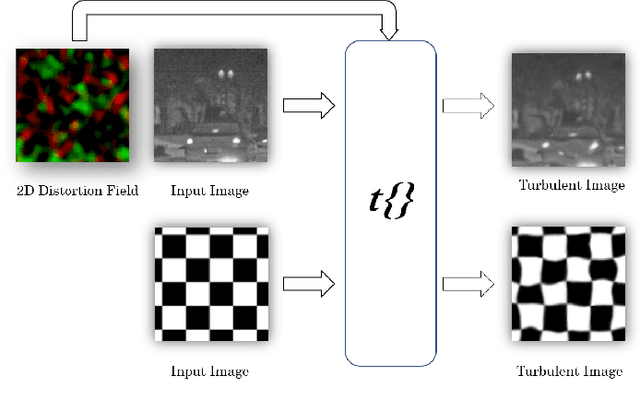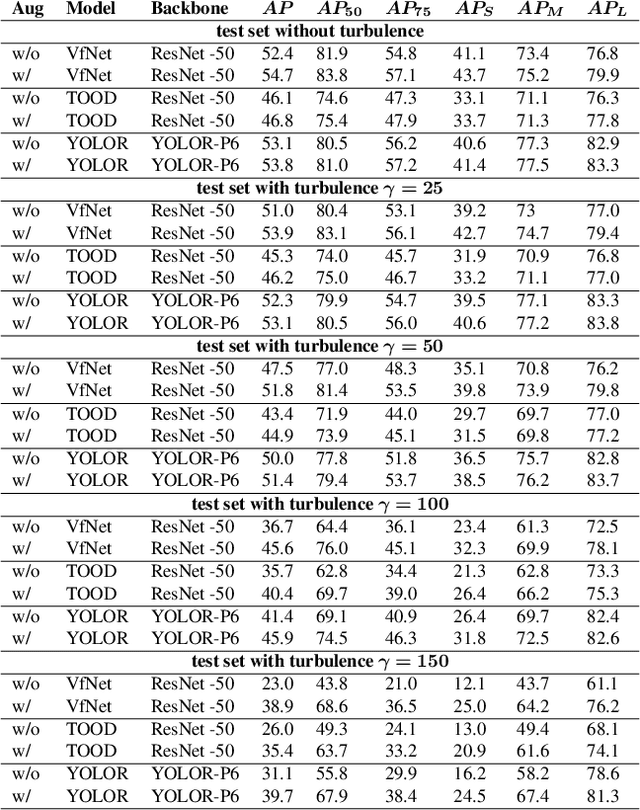Engin Uzun
How to Augment for Atmospheric Turbulence Effects on Thermal Adapted Object Detection Models?
May 10, 2024Abstract:Atmospheric turbulence poses a significant challenge to the performance of object detection models. Turbulence causes distortions, blurring, and noise in images by bending and scattering light rays due to variations in the refractive index of air. This results in non-rigid geometric distortions and temporal fluctuations in the electromagnetic radiation received by optical systems. This paper explores the effectiveness of turbulence image augmentation techniques in improving the accuracy and robustness of thermal-adapted and deep learning-based object detection models under atmospheric turbulence. Three distinct approximation-based turbulence simulators (geometric, Zernike-based, and P2S) are employed to generate turbulent training and test datasets. The performance of three state-of-the-art deep learning-based object detection models: RTMDet-x, DINO-4scale, and YOLOv8-x, is employed on these turbulent datasets with and without turbulence augmentation during training. The results demonstrate that utilizing turbulence-specific augmentations during model training can significantly improve detection accuracy and robustness against distorted turbulent images. Turbulence augmentation enhances performance even for a non-turbulent test set.
Augmentation of Atmospheric Turbulence Effects on Thermal Adapted Object Detection Models
Apr 19, 2022



Abstract:Atmospheric turbulence has a degrading effect on the image quality of long-range observation systems. As a result of various elements such as temperature, wind velocity, humidity, etc., turbulence is characterized by random fluctuations in the refractive index of the atmosphere. It is a phenomenon that may occur in various imaging spectra such as the visible or the infrared bands. In this paper, we analyze the effects of atmospheric turbulence on object detection performance in thermal imagery. We use a geometric turbulence model to simulate turbulence effects on a medium-scale thermal image set, namely "FLIR ADAS v2". We apply thermal domain adaptation to state-of-the-art object detectors and propose a data augmentation strategy to increase the performance of object detectors which utilizes turbulent images in different severity levels as training data. Our results show that the proposed data augmentation strategy yields an increase in performance for both turbulent and non-turbulent thermal test images.
 Add to Chrome
Add to Chrome Add to Firefox
Add to Firefox Add to Edge
Add to Edge